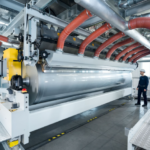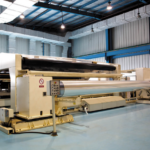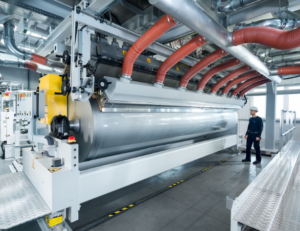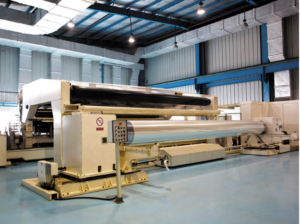Food Packaging is the first thing food manufacturers think of every time they launch a new product. It’s because food packaging is the most crucial aspect of protecting a food product from physical damage, environmental contamination, and preserving the product while in transit. It’s also the only barrier between a consumer and the final product, so packaging films need to do the job really well.
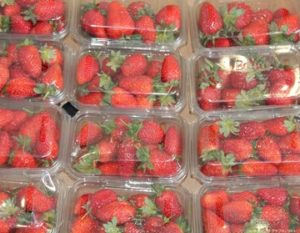
The Consumer Packaged Good space identifies two significant types of food packaging materials – Rigid Packages and Flexible Packages. Both of these have their benefits and applications.
Rigid Packaging Materials
As the name implies, Rigid Packaging Materials refer to structures that are rigid and unable to bend. They are known for providing ultimate strength and support to products. Common examples include paperboard boxes, aluminum cans, and glass jars. Some of the most popular applications of rigid packaging food materials are cereal boxes and food cans.
Flexible Packaging Materials
On the contrary, Flexible Packaging Films are materials that are ‘literally’ flexible. They are made from malleable materials with an inherent capability of bending without breaking. Flexible packaging can be bent, folded, and shaped based on how you want to use them. According to The Flexible Packaging Association, flexible packaging materials are the most widespread materials used in retail and institutional food packaging.
Is Flexible Packaging Any Better?
The most significant advantage of flexible packaging films is their versatility. They come in an immense range of materials and are processed in many orientations, making them suitable for use in various forms and sizes.
What’s more, they are cheaper than their rigid counterparts. Flexible packaging materials now outnumber the rigid containers that once ruled the consumer packaged goods space. This is probably why the global flexible packaging market was forecasted to reach up to $272 billion in sales in 2020, and the market is estimated to hit $46.24 billion by 2025.
Flexible packaging stands as the second largest packaging segment in the US alone, with a whopping 19% market share out of the total $177 billion packaging market.
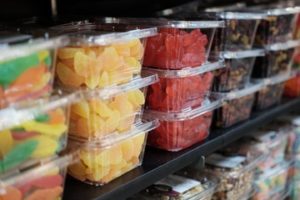
Flexible materials like squeeze pouches provide portable, unbreakable, lightweight, and inexpensive alternatives to traditional glass jars, metal cans, and plastic tubs.
This article will brief you on the two major types of plastic food packaging films – flexible films and barrier films, along with current trends and innovations in these film types that help satisfy the demands of modern consumers.
Why do Consumers Prefer Flexible Packaging?
The flexible packaging films have been dominating the consumer packaging goods market since 2010. The global flexible packaging market skyrocketed sales by 56% between 2010 and 2014. It’s because the benefits of flexible packaging are hard to undermine as consumers prefer and demand flexible packaging films over other packaging materials for a bunch of different reasons:
- Easy to carry and store
- Opening and resealing is effortless
- Easy to open
- Extend shelf life of foods which results in less consumer waste
Other advantages include:
- Positive sustainability profile
- Easy to manufacture
- Lightweight
What are Barrier Films?
Barrier Films are a subtype of flexible packaging films. They are composed of a single or multiple layers of flexible films. The barrier films are called so because of their ability to prevent the permeation of oxygen, carbon dioxide, and moisture, thus acting as barriers.
The recent innovations in barrier film technology are also researching impermeation against mineral oil and UV radiation. It is due to this impervious nature of barrier films that help keep nutrients and functional properties of foods intact.
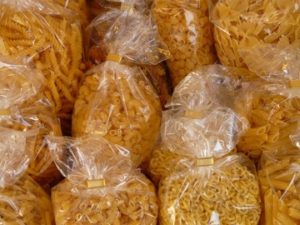
The production of barrier films requires the incorporation of particular types of polymers known for their impervious properties. These include cast polypropylene (CPP), polyethylene (PE), and polyvinylidene chloride (PVDC).
Types of Plastic Film Packaging
Following are some of the top-performing flexible food packaging films. Each of these has slight differences in their orientation which confers their distinct properties. The applications of these films in the food packaging industry, therefore, depend on their unique barrier properties.
Biaxially Oriented Polypropylene or BOPP Film
BOPP films are made from polypropylene polymers, which are biaxially oriented, making the film stretch in two different directions during processing.
Properties
- High physical stability and mechanical strength
- Superior transparency and clarity
- Considerable degree of air tightness
- Wear resistant
- Glossy finish
Uses
- Commonly used in snack packaging
- Tobacco packaging
Biaxially Oriented Polyethylene Terephthalate or BOPET Film
BOPET films are types of polyester films that are made by stretching polyethylene terephthalate (PET) into two directions.
Properties
- Excellent clarity
- High tensile strength
- Strong mechanical properties
- Rigidity, hardness, and physical toughness makes them puncture resistance
- Resistant to extremes of temperature
- Impermeable to air, oil, and fragrance
- Provide electrical insulation
- Non-toxic
Uses
- Packaging of fresh produce
- Meat packaging
- Also used as packaging films are dairy products and confectionery items
Biaxially Oriented Polyamide or BOPA Film
BOPA film is a type of nylon film that has been processed through biaxial orientation.
Properties
- Resistant to corrosion and abrasion
- Can withstand high temperature
- Mechanical toughness imparts puncture and tear resistance
- Oxygen resistance
- Impermeable to water vapor and moisture
- Heat sealability is poor
Uses
- Widely used for packaging of frozen foods, such as sausage packaging
- Also used for meat packaging
Cast Polypropylene or CPP Film
CPP films are made by co-extrusion. One side of these films is made heat-sealable, while the outer side is treated with cast polypropylene film.
Properties
- Thermally stable, which imparts good heat seal strength
- Puncture resistance
- Transparent
- High machinability
Uses
- Cast Propylene films are mainly used to pack baked goods and confectionery items
- They are commonly used film materials in flexible and stand up pouches, such as pasta pouching
- CPP films are printable and smoothly run on packaging equipment
Polyethylene or PE Film
Also known as polyethene, PE films are the most common plastic packaging films. They are made from petroleum-based materials.
Properties
- The inner layer (food contact layer) is heat-sealable
- Provides moisture resistance
Uses
- Packaging of fresh produce
- Also used as carton liners
Polyvinylidene chloride or PVDC Coating
Properties
- Resistant to gases, fragrance, and moisture
- Abrasion-resistance
- Innermost layer is heat-sealable
Uses
- Commonly used for packaging of snacks like biscuits and wafers
- Cheese packaging
- Meat packaging
Current Trends and Recent Innovations in Flexible Packaging Materials
Flexible packaging materials have earned significant popularity over the last few years. Not only do they provide superior containment and protection of food, but they improve branding as well. However, recent advancements in the food packaging films market aim to improve three crucial areas from customers’ and manufacturers’ standpoint.
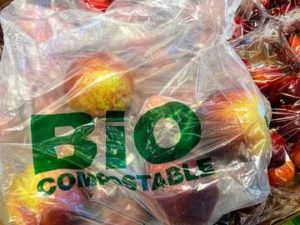
Sustainability
Environmentally-conscious consumers now demand sustainable packaging of foods. Likewise, brands are now going the extra mile to meet environmental safety regulations and fulfill consumer needs. Flexible packaging films are therefore reconsidered to be manufactured with methods that minimize energy consumption and carbon footprints. Stand-up pouches are examples of one such advancement.
Containment Features
When it comes to processing food packaging films, the functionality of containment is of utmost importance. More so, consumers look for packaging that can easily be reused such that it can be resealed.
Need for Digital Printing
With print on demand on the rise, brands now look for customizable digital printing options. Therefore, packaging companies that cater to creating personalized packaging without compromising on functionality will continue to thrive for years to come.
Addressing Plastic Waste Issues and Employing Recycling Programs
Where plastic packaging films have helped consumers by providing them with safe and hygienic food solutions, it’s also essential to protect the environment. According to the Guardian, around 280 million tons of plastic waste was produced in 2017, and most of it ends up in landfills, soil, and marine waste. It’s pivotal to employ plastic recycling programs to protect the environment without compromising on consumers’ needs. In 2012, only 9% of the total plastic waste was recycled, while the rest got dumped into rivers and the sea. This is where the need for using plastic recycling plants comes in. Over the past several years, China has been the frontrunner in recycling plastic waste and protecting the environment. In fact, approximately 45% of the world’s total plastic waste is imported to China, where it’s processed and recycled for producing usable products.
Improving the recycling process can further help contribute towards managing global plastic waste by producing high-quality products. However, the major hurdles in doing so are a lack of finances and security of supply.
Financial Assistance for Recycling Industry
Initiating funding programs that work with informed business leaders can help generate investments for the recycling industry. When done right, it can generate massive revenue and transform the entire plastic recycling industry’s entire infrastructure.
Streamlining the Supply of Scrap Materials
Apart from finances, managing the supply of scrap materials is another crucial factor that can shape plastic recycling infrastructure. Without an adequate, ongoing supply of scrap material, plastic waste will continue damaging the environment, halting the recycling process and causing waste of precious sources.


